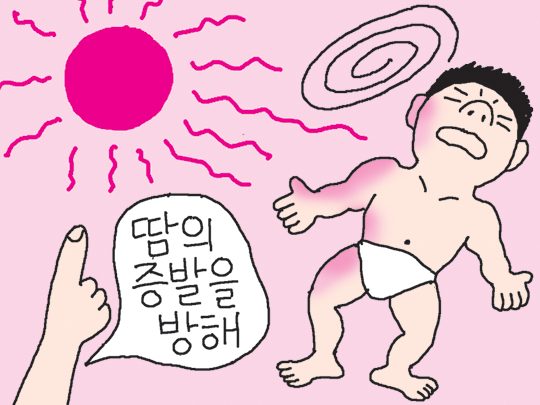기상청이 폭염 주의보와 경보를 잇달아 발령하는(issue heatwave alerts and warnings in a row) 등 찜통더위(a steamy heat)가 전국을 뒤덮고 있다(continue its sweep across the country). 사람의 체온(the human body temperature)은 36.5도. 그런데 왜 체온보다 높지도 않은 기온에 사람들은 파김치가 되는 걸까(be fagged out).
인체는 열을 발산해야 하는데(need to disperse heat) 기온이 체온에 가까워지면 힘들어진다. 근육과 신진대사(muscles and metabolism)는 지속적으로 열을 생성하기 때문에 땀을 흘리고, 더운 공기를 내쉬며, 혈액을 피부 표면 가까이 순환시켜(sweat, exhale warm air and circulate blood near the surface of our skin) 열을 식혀야 한다(cool down the heat).
인체와 공기 간의 온도 변화율(the temperature gradient between the body and the air)이 높으면 쉽게 빠져나간다. 그런데 기온이 체온 언저리를 맴돌게 되면(hover around our internal temperature) 열이 빠지지 못하고 체내에 머물러 더위와 불쾌감을 느끼게(feel hot and uncomfortable) 된다.
습기는 사태를 더욱 악화시킨다(make things worse). 인체 냉각 메커니즘(the human body’s cooling mechanism) 중 하나인 땀의 증발을 방해해(interfere with the vaporization of sweat) 불쾌지수를 높인다(raise the discomfort index).

습구흑구온도지수(Wet-Bulb Globe Temperature Index)라는 것이 있다. 기온·습도·풍속·태양복사열 영향을 종합한(put together the effects of temperature, humidity, wind speed and solar radiation) ‘합성온도'(a composite temperature)를 말한다. 야외 근무 근로자·군인·운동선수 등을 위한 열사병 예방지수다. 28을 넘으면 마라톤 경기가 중단된다. ‘위험’ 단계(28~31)에서는 심한 운동을 하지 말고 물을 충분히 마셔야 한다. ‘매우 위험'(31 이상)이 되면 운동 절대 금물이다. 26일엔 30까지 올랐다.